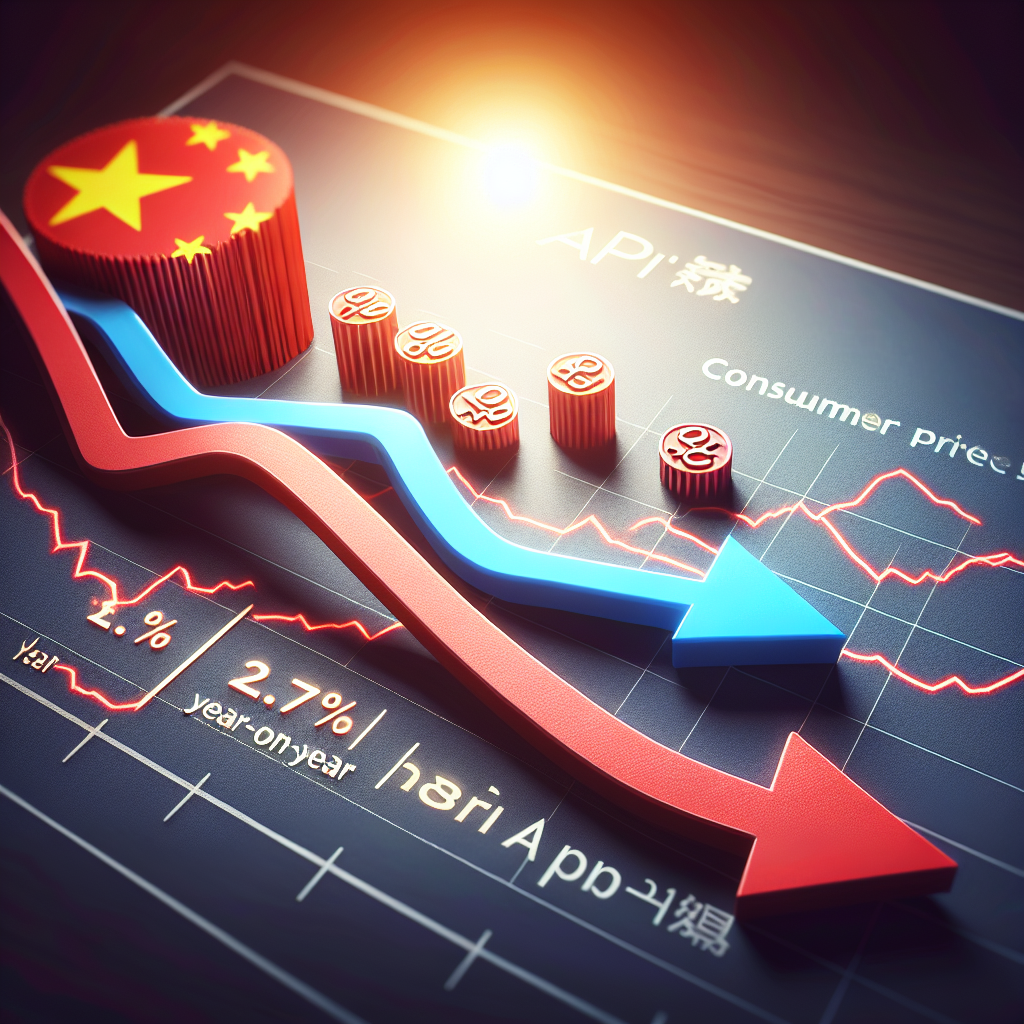In April, China’s Producer Price Index (PPI) fell by 2.7% year-on-year, marking the largest drop in six months. The Consumer Price Index (CPI) also continued to decline for the third consecutive month in April, exacerbating the deflationary pressures and underscoring the impact of the China-US trade war on the Chinese economy.
The persistent sluggishness in the Chinese real estate market, high household debt levels, and job instability have been restraining investment and consumer spending, keeping deflationary pressures lingering. Currently, the Chinese economy is also facing external risks due to trade barriers.
On Saturday, May 10th, the National Bureau of Statistics of the Communist Party of China released data showing that in April 2025, the country’s PPI dropped by 2.7% year-on-year, exceeding March’s 2.5% decline but slightly below economists’ forecast of 2.8%. PPI decreased by 0.4% month-on-month; while the industrial producer purchasing price fell by 2.7% year-on-year and 0.6% month-on-month. In the first four months of the year, both PPI and purchasing prices decreased by 2.4% compared to the same period last year.
“China continues to face ongoing deflationary pressures,” said Zhiwei Zhang, President and Chief Economist of Pinpoint Asset Management, to Reuters. “With the possibility of weakened exports, the pressure may intensify in the coming months.”
Zhang further added, “Even if the US-China trade negotiations progress and tariffs are lowered, it is unlikely that tariffs will return to levels before April. Beijing needs to adopt more proactive fiscal policies to stimulate domestic demand and address the deflation issue.”
The National Bureau of Statistics also announced on Saturday that the CPI in April decreased by 0.1% year-on-year, consistent with March’s 0.1% and Reuters’ survey forecast. In April, the core inflation rate, excluding volatile food and fuel prices, rose by 0.5% year-on-year, in line with March’s increase.
For the first three months of this year, the Chinese economy continued to be impacted by deflation, reflecting supply-demand imbalances. The GDP Deflator Index (a broad measure of overall price changes in the economy) has been declining for the eighth consecutive quarter, the longest continuous decline since data for that quarter began in 1993.
David Qu, an economist at Bloomberg Economics, wrote in a report on Saturday, “Stimulus measures to boost consumption since the fourth quarter of last year seem to have had limited effectiveness.”
The US tariffs have had a significant impact on Chinese employment and business revenue, potentially weakening Chinese consumers’ purchasing power and willingness to spend, which could lead manufacturers and service providers to cut prices.
Due to the pressure on Chinese exports resulting from the US-China trade war, major Chinese retail giants such as JD.com and Alibaba’s Hema Fresh have taken measures to assist exporters in shifting towards the domestic market, further lowering domestic prices.
Global investment banks, including Goldman Sachs, have downgraded their GDP forecasts for China to below the official target of around 5%. Goldman Sachs adjusted down to 4%, while UBS predicted China’s economic growth to be only 3.4% this year, marking the most pessimistic outlook among major investment banks.

